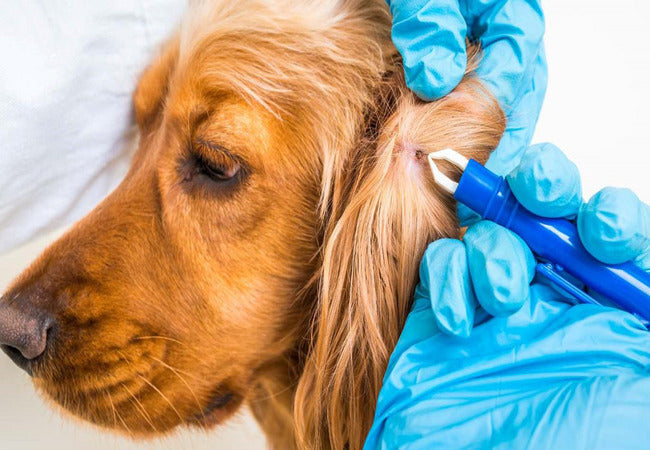Canine Babesiosis 2025: Vet-Approved Symptoms & Treatment Guide 🐕💊

In this article
🦠🐶 Babesiosis in Dogs: Causes, Symptoms & Treatments (2025 Guide) 🐾💊
By Dr Duncan Houston BVSc
As a veterinarian, I often encounter dogs suffering from babesiosis, a tick-borne disease that can lead to severe anemia and organ damage. Understanding this condition is crucial for early detection and effective treatment. This comprehensive guide aims to educate pet owners on the causes, symptoms, and treatment options for babesiosis in dogs.
🧬 What Is Babesiosis?
Babesiosis is caused by Babesia, a genus of microscopic parasites that infect red blood cells. The disease is primarily transmitted through tick bites but can also spread via dog bites, blood transfusions, or from mother to puppy during pregnancy.
🐞 Causes of Babesiosis
The primary mode of transmission is through the bite of an infected tick, particularly the brown dog tick (Rhipicephalus sanguineus). Other transmission methods include:
- 🐕 Dog-to-dog bites, especially in fighting breeds
- 🩸 Contaminated blood transfusions
- 🤰 Transplacental transmission from mother to puppy
Breeds such as Greyhounds and Pit Bull Terriers are more susceptible to certain Babesia species.
⚠️ Symptoms of Babesiosis
Symptoms can range from mild to severe and may include:
- 😴 Lethargy and weakness
- 🍽️ Loss of appetite
- 🌡️ Fever
- 🩸 Pale gums and mucous membranes
- 🧠 Neurological signs like seizures or imbalance
- 🟡 Jaundice (yellowing of skin and eyes)
- 💩 Dark-colored urine
- 📉 Weight loss
In severe cases, babesiosis can lead to multiple organ failure and death if not treated promptly.
🩺 Diagnosing Babesiosis
Diagnosis involves a combination of clinical signs and laboratory tests:
- Blood smear: Microscopic examination to detect Babesia parasites
- PCR testing: Detects Babesia DNA for accurate species identification
- Serology: Identifies antibodies against Babesia
- Complete blood count (CBC): Assesses anemia and platelet levels
- Biochemistry panel: Evaluates organ function
💊 Treatment Options
Treatment depends on the Babesia species and severity of the disease:
- Imidocarb dipropionate: Effective against B. canis; administered via injection
- Atovaquone and azithromycin: Oral combination therapy for B. gibsoni
- Supportive care: Includes IV fluids, blood transfusions, and anti-inflammatory medications
Early treatment improves prognosis, but some dogs may remain carriers and require ongoing monitoring.
🛡️ Preventing Babesiosis
Prevention focuses on tick control and minimizing exposure:
- 🧴 Use veterinarian-recommended tick preventatives year-round
- 🔍 Regularly check your dog for ticks, especially after outdoor activities
- 🏡 Maintain a clean yard to reduce tick habitats
- 🚫 Avoid dog fights and unsupervised interactions with unfamiliar dogs
- 🩸 Screen blood donors for Babesia to prevent transfusion-related transmission
📱 Support and Resources
If you suspect your dog has babesiosis, consult your veterinarian immediately. For additional support:
- Ask A Vet: Access professional veterinary advice through the Ask A Vet platform.
- Download the Ask A Vet App: For quick access to veterinary support, download the Ask A Vet app.
Early diagnosis and appropriate treatment can significantly improve your dog's quality of life.
🐾 For more expert advice and pet care tips, visit AskAVet.com.






